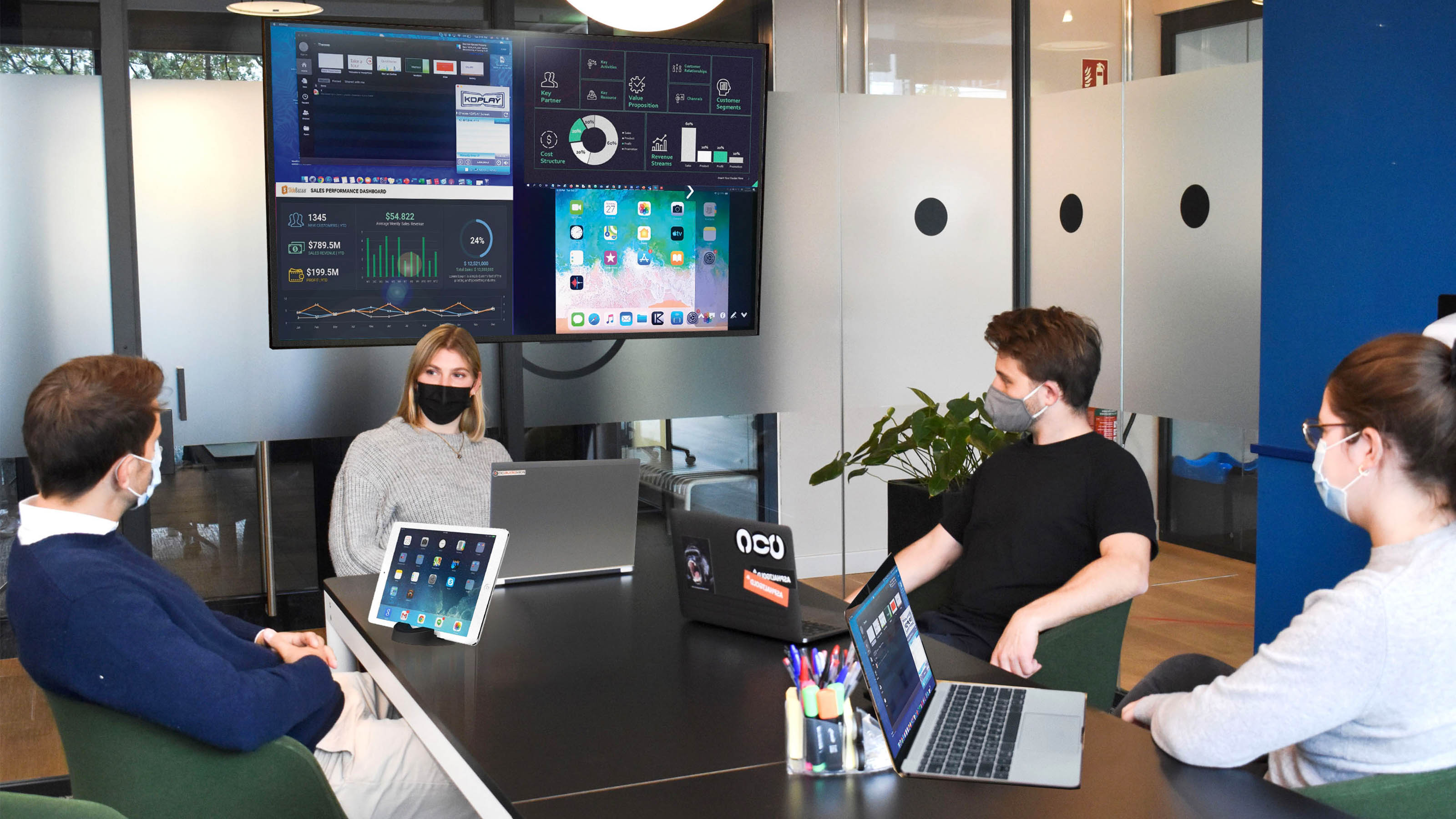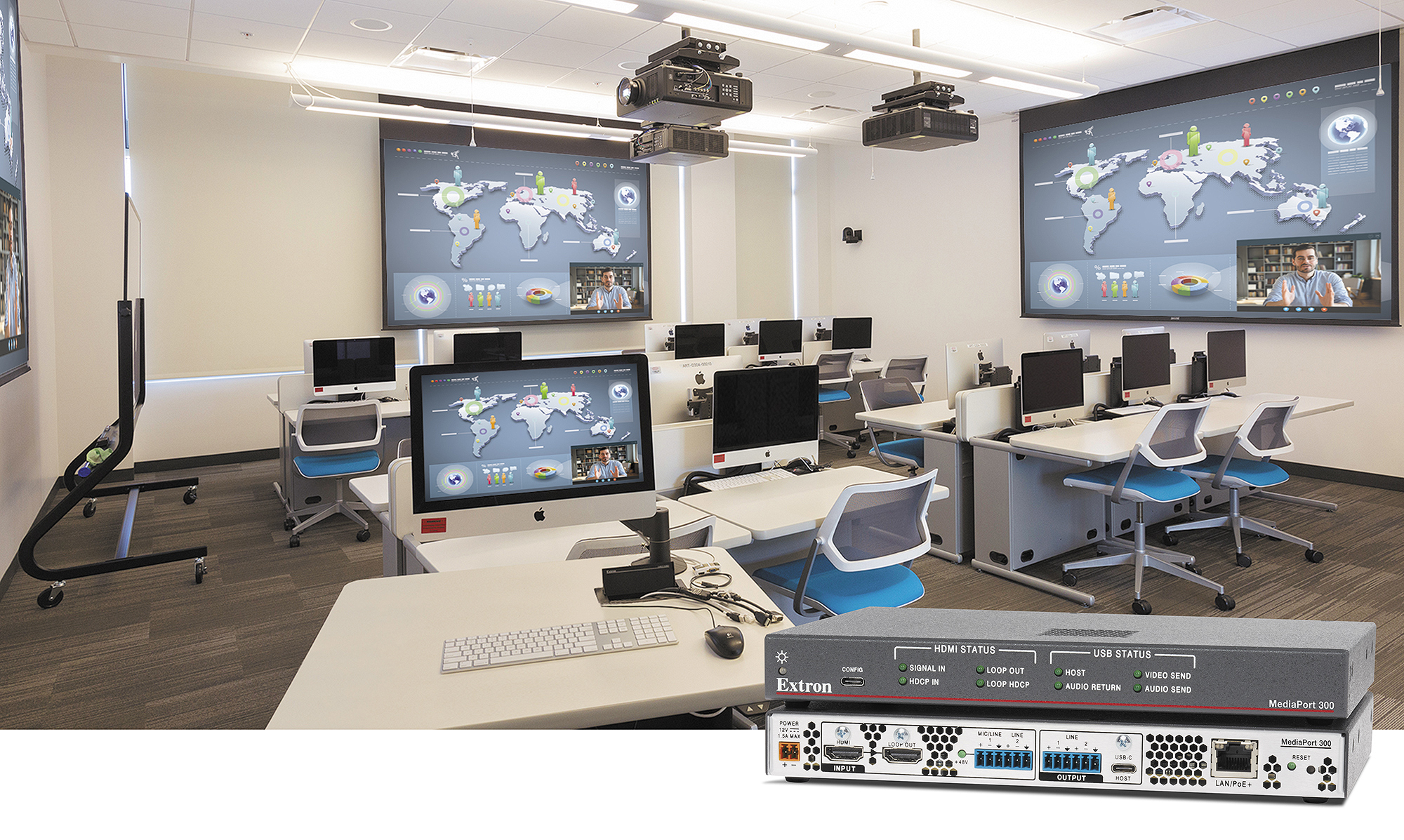
The modern conference room is built on the ability to share content, including shared documents, videos, and slide presentations. As a result, organizations are moving away from stationary proprietary presentation and conferencing systems—and embracing the BYOD (bring your own device) movement.

“In the past, where multiple contributors needed to share from their portable devices, implementation had been clumsy at best, with USB drive file swapping or cable sharing for laptop sources, and no practical way to include content from tablets and smartphones beyond emailing files and links to the host,” said Jonathon Ferry, vice president of product education and experience at Key Digital.
BYOD systems leverage the power and comfort of personal devices and give participants the freedom to present and share information seamlessly. “Think about how many times you may have accessed your workplace apps on your smartphone, then multiply that across your organization," offered Lauren Simmen, director of product marketing at Creston. "The scope of BYOD becomes very apparent."
[Crestron Tackles the Modern Workplace: New Report Reveals Current Hybrid Trends]
Eliminating the need to be tied to a dedicated computer or transfer files, BYOD delivers an intuitive solution that allows presenters to share with confidence and ease, reducing the headaches caused by using a fixed system and avoiding the potential roadblocks of stationary technology. Switching to BYOD systems can also reduce the overall expense of maintaining and updating dedicated computers, which can be challenging with the high usage of these spaces and limited IT staffing resources.
Disadvantages to not embracing BYOD include higher overall costs, relying on software updates, and being stuck using only specific hardware or vendors. “Closed systems are very limiting, and the process of sharing content—the steps of finding a collaborative means of communication [email, Dropbox, etc.], loading it onto the proper device in a closed system, and then either instructing the guest on using the native device or controlling the sharing of content yourself—is pretty laborious,” said Simmen. “And what if your machine doesn’t have the right program to open the content in question? The ability of a BYOD collaborator to call up a file on their tablet and send that content right to a display saves time and frustration.”
Making Connections
Unless you have a wireless system, most BYOD systems will need a myriad of AV connections to support laptops, mobile devices, and other equipment. With the ability to support a wide selection of devices, BYOD systems are configured to accommodate various connection types.

A significant transition within BYOD spaces is USB-C, which is growing in widespread acceptance and can transmit data and power through a single cord. “A modern system with a USB-C connection will allow the presenter to walk in with a laptop, connect, and supply power,” explained Garth Lobban, director of marketing, Atlona. “It will send video and audio out and receive video in. For example, a presenter that walks into a room designed with an Atlona AT-OME-MS42 system can immediately take control of any USB peripherals connected to the device, such as cameras and speakerphones.”
Built-in tabletop enclosures can help keep cables organized while reducing wear and tear from daily use. Extron Cable Cubby enclosures, for example, can provide easy pass-through for cables, but also allows them to retract automatically with the simple push of a button, decreasing the stress caused by messy wires and cords.

Those looking to not worry about cable management can look to wireless BYOD. Many organizations are now investing in well-engineered wireless systems so participants to share content from any location, making proximity to wiring or worries about organizing them a non-issue.
[How BYOD Is Impacting Today's Conference Room Connectivity]
With systems becoming more reliable and robust, wireless BYOD empowers organizations to think outside the box and increase connectivity within smaller or less frequently used spaces. This is useful as businesses makeover traditional office spaces to support hybrid workers.
Meeting rooms may be the first thing to come to mind when discussing BYOD. Still, BYOD can easily transition into another trending topic, BYOM (bring your own meeting), where portable devices are used to participate in videconferences where remote users use Unified Communications (UC) software.

“While these UC meetings often use a dedicated conference computer to run the meeting and use cameras, microphones, and speakers to communicate with the remote users," said Joe da Silva, vice president of marketing for Extron, "there are options in which a laptop or other portable device can host the UC meeting, connecting to the room’s camera and microphone to show all the room participants to the remote attendees."
Extron's MediaPort 300 or MediaPort 200 bridges the connection between room cameras and audio systems, allowing remote users to hear everything from the local meeting room and vice versa. “A logical progression will be to extend presentation and collaboration spaces to incorporate both local and remote users for more comprehensive, efficient, and seamless collaboration,” da Silva added.
Be Our Guest

Lauren Simmen, Crestron
Classrooms and educational settings are also starting to embrace BYOD, allowing educators to utilize personal devices to share content and enhance their lessons. With many educators working out of shared classrooms, BYOD offers the flexibility to connect wirelessly to the classroom system to deliver content through their preferred devices.
BYOD also allows guest speakers, or even students, to have the ability to present from their devices and preferred platform. This is also a selling point for corporations hosting outside consultants, contractors, and salespeople. "The ability to share and work together on those digital assets that the guest has brought into the building—with as little friction as possible—makes for a terrific experience," said Simmen.
Laptops are still the leading technology used in BYOD. Still, as systems continue to evolve, mobile devices will play a more vital role as smartphones can support major codecs and connect wirelessly. Jason Pavao, field sales engineer with Yamaha Unified Communications, envisions major players like Teams and Zoom incorporating value-added services like real-time document editing and sharing. “It is not enough to just have the platform for connectivity," he said. "By leveraging the cloud, platforms will enable true collaboration.”
Integrators are also starting to incorporate new technology coming to market that capitalizes on wireless USB connectivity, including USB-enabled mics, speakers, and webcams. This increases the spaces’ ability to connect directly to professional-grade conferencing cameras and audio systems through the user’s device, creating a comprehensive, all-in-one conferencing solution.
For those that don’t want to be confined to the four walls of a meeting room or classroom, BYOD will genuinely allow them to reimagine what it is to meet. “Now that hybrid work is the new normal, different types of meeting spaces are beginning to emerge,” said Simmen. “Areas like lounges or casual sitting areas are now commonly used as meeting points. BYOD can bring the meeting to those spaces where dedicated conferencing solutions aren’t always feasible.”
Secure Entry
Traditional wired BYOD systems that connect solely to a local display system are innately secure unless the presenter connects the local network or LAN to the internet, making wireless systems more of a concern. Risk can be mitigated using technology like Extron's ShareLink Pro wireless presentation system, which can encrypt content or require an access code to connect securely to display and share content.

IT departments must implement plans and policies to control user access within these open systems, helping to keep user data and information safe. “Unless IT departments ensure that personal connections cannot interface with the corporate network, employees logging into their personal e-shopping accounts or emails can be at risk for stolen information,” explained Pavao.
A dedicated presentation computer with enterprise logins may be the more sensible option for organizations where security is paramount, or the average user does not have personal devices. Hybrid options, outfitting spaces with a dedicated computer and BYOD connections, or making some rooms BYOD and others native are options many companies are considering.







